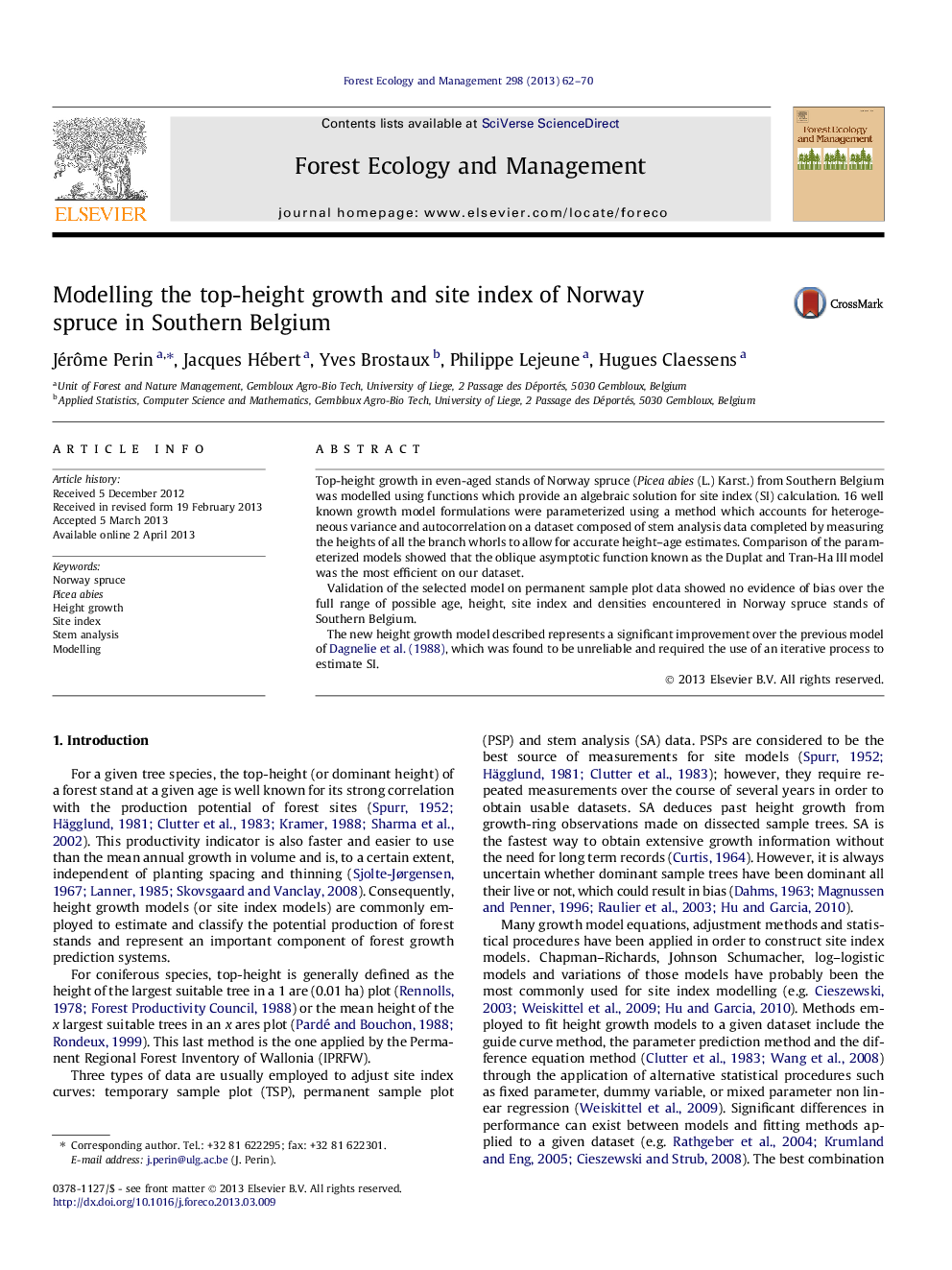| Article ID | Journal | Published Year | Pages | File Type |
|---|---|---|---|---|
| 86838 | Forest Ecology and Management | 2013 | 9 Pages |
•We model top-height growth of Norway spruce with stem analysis data.•We show the importance of the model selection to avoid biased prediction.•Validation on permanent sample plot data show no evidence of bias.•Interactions between site index and management can lead to unbalanced sampling.
Top-height growth in even-aged stands of Norway spruce (Piceaabies (L.) Karst.) from Southern Belgium was modelled using functions which provide an algebraic solution for site index (SI) calculation. 16 well known growth model formulations were parameterized using a method which accounts for heterogeneous variance and autocorrelation on a dataset composed of stem analysis data completed by measuring the heights of all the branch whorls to allow for accurate height–age estimates. Comparison of the parameterized models showed that the oblique asymptotic function known as the Duplat and Tran-Ha III model was the most efficient on our dataset.Validation of the selected model on permanent sample plot data showed no evidence of bias over the full range of possible age, height, site index and densities encountered in Norway spruce stands of Southern Belgium.The new height growth model described represents a significant improvement over the previous model of Dagnelie et al. (1988), which was found to be unreliable and required the use of an iterative process to estimate SI.
